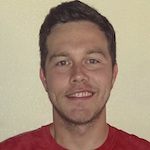Medical scribing can help to
boost productivity, enhance documentation and improve patient and provider satisfaction. But the scribe's finest hour probably comes when the department
transitions to a new EMR system.
In today's post, Vituity Scribe Services Manager Melissa Maranda sits down with three lead scribes who recently supported EMR transitions at their hospitals to talk about their successes and lessons learned.
Today's panel:
- Jennifer Flesher, St. Bernadine Medical Center, San Bernardino, Calif. Transitioned from paper charts to a Cerner EMR.
- Aileen Mung, Sutter Sacramento General Hospital, Sacramento, Calif. Transitioned from a T-System EMR to an Epic EMR.
- Peter Sharp, Doctors Medical Center in Modesto, Calif. Transitioned from a Medhost EMR to a Cerner EMR.
MM: Welcome, everyone. To start us off, please tell us how your team prepared for the changeover.JF: It was quite a journey! When you're moving from paper to an EMR, there's a lot of work to do leading up to the go-live date. Everyone needs to be trained on the new system. And ideally, you should spend the last month making sure that everything is order — that you have the right computers, that the logons are working, and so on.
One big challenge for us was staffing. To best support our providers, we needed to expand our scribe team before the go-live date. This meant having a lot of balls in the air at once as we
recruited and onboarded four new hires — all while learning the new system.
Training was another issue. Our health system brought in a physician liaison to work with the providers, which was nice. But my co-lead and I were concerned that the scribes weren't really being included in the process. We advocated for more training, and we (the leads) did end up getting some time with the liaison that helped prepare us to train the scribes.
AM: I hear you about the training. Our hospital mandated a four-hour Epic training for the scribes, but it was pretty bare bones – just where to click for this and that. As scribe lead, I also attended the provider training, which was a lot more in-depth. I felt our scribes could also benefit from that information, so I created a handout and met with the team to go over it.
PS: At our hospital, Cerner hosted a three-hour class for both scribes and providers and gave out information packets. Before the go-live date, we held staff meetings to coordinate our preparation work.
MM: How did you staff for the go-live? Did you have extra scribes working to help the providers?JF: As I mentioned before, we added several new hires to our team for this purpose, and we were scrambling to train them right up until the go-live. The effort paid off, because we were able to have extra scribes float and help out during the first few days, which made things less stressful.
PS: We had three scribes that were
full-time trainers at our site, and we had them working around the clock for the first two weeks to answer questions, which was great. They spent hours with the providers who were struggling, which helped a lot.
AM: We didn’t staff any additional scribes, but we did schedule the more experienced scribes in triage and also put trainers on the hardest shifts. The newer people were assigned to slower shifts or paired up with an experienced colleague who could offer support.
MM: How long did it take the scribes to catch onto the new workflow?JF: I would say about a week. It takes a few shifts to get the hang of it, but they have been pretty versatile.
AM: Wow, that's great! I would say it took three to four weeks for our team to catch on, self included. It's been a month, and I'm finally feeling really confident in supporting our scribes and providers.
PS: A month sounds about right to me too. Our entire team, scribes and providers, were trying to figure it out together. It's really forced us to work as a team, keeping our minds open and listening to one another. Though to be honest, some days are better than others in that regard!
MM: What has been your biggest challenge?JF: For the providers, it was probably learning how to input orders. It takes a while to figure out which key phrases pull up what they want. For scribes, it's coping with the
pace of change. For a while, every time we checked our email, there was a new tweak to the process.
PS: A lot of the providers struggled with the new system, and the scribes had to balance being helpful and supportive with maintaining their nonclinical role. Ethically, they can only give so much guidance when it comes to things like inputting orders. That's a tough line for scribes to walk, because they genuinely want to help.
AM: Under our last system, the providers wrote out their orders on paper, then gave them to the secretaries, who entered them into the EMR. Now the providers have to input their own orders, and that's a big challenge for them. For scribes, the hardest part is just navigating EPIC. As you're clicking through the screens, stuff like the physical exam findings isn't always located where you'd expect it to be.
MM: What words of advice do you have about moving to a new EMR?JF: I would recommend that teams obtain their login info a month before the go-live so they can get some hands-on practice. They should also schedule training during that last month to make sure everyone is up to speed.
Also, our entire ED transitioned from paper to EMR all at once, but I think a phased approach would have been helpful. First computerized physician order entry (CPOE), then nursing, then providers.
PS: Go in with an open mind. It's a challenge, but give it a month, and it really will get better.
That being said, knowledge is power. Advocate for as much training as possible, and do it early. Also, I'd suggest reaching out to scribes at other hospitals who use the same EMR. I think if I had done that, I'd have started with a clearer picture of Cerner's navigation and workflow.
AM: The lead scribe really has to know how to use the system better than anyone else. It’s more than just going to the required training. You want to know more so you can support your department no matter what comes up.
MM: Any final thoughts before we wrap up?JF: I really think our scribes eased the transition for our providers. Since we moved to the EMR, the scribes and providers have really become a closer team. When we were on paper, the providers didn't mind going without a scribe now and then. But now if a scribe doesn't show up, they come and ask for one

























